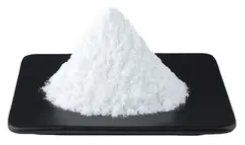Electronic address: Aldosterone (Aldo) could induce cardiac fibrosis, a hallmark of heart disease
Aldo direct effects on collagen production in cardiac fibroblasts remain controversial. Our aim is to characterize changes in the proteome of adult human cardiac fibroblasts treated with Aldo to identify new proteins altered that might be new therapeutic targets in cardiovascular diseases. Aldo increased collagens expressions in human cardiac fibroblasts. Complementary, using a quantitative proteomic approach, 30 proteins were found differentially expressed between control and Aldo-treated cardiac fibroblasts. Among these proteins, 7 were up-regulated and 23 were down-regulated by Aldo. From the up-regulated proteins, collagen type I, collagen type III, collagen type VI and S100-A11 were verified by Western blot. Moreover, protein interaction networks revealed a functional link between a third of Aldo-modulated proteome and specific survival routes. S100-A11 was identified as a possible link between Aldo and collagen. Interestingly, CRISPR/Cas9-mediated knock-down of S100-A11 blocked Aldo-induced collagen production in human cardiac fibroblasts. In adult human cardiac fibroblasts treated with Aldo, proteomic analyses revealed an increase in collagen production. ergothioneine skincare -A11 was identified as a new regulator of Aldo-induced collagen production in human cardiac fibroblasts. These data could identify new candidate proteins for the treatment of cardiac fibrosis in cardiovascular SIGNIFICANCE: S100-A11 is identified by a proteomic approach as a novel regulator of Aldosterone-induced collagen production in human cardiac fibroblasts. Our data could identify new candidate proteins of interest for the treatment of cardiac fibrosis in cardiovascular diseases. Effect of high advanced-collagen tripeptide on wound healing and skin recovery after fractional photothermolysis treatment.BACKGROUND: Collagens have long been used in pharmaceuticals and food supplements for the improvement of skin.AIM: We evaluated the efficacy of high advanced-collagen tripeptide (HACP) on METHODS: Using an in vitro model, we performed HaCaT cell migration assays and collagen gel contraction assays using HACP concentrations of 1, 10 and 100 μg/mL. In this pilot study, eight healthy volunteers were randomly divided into two groups. Both the control and experimental groups received fractional photothermolysis treatment, but in the experimental group, four subjects received 3 g/day of oral collagen peptide (CP) for 4 weeks. To assess transepidermal water loss in each patient before and after the treatment, we used a Corneometer and a Cutometer, and we also assessed the patient's Erythema RESULTS: The cell migration assay showed that HACP enhanced wound closure, but not in a dose-dependent manner. The collagen gel contraction assay showed increased contractility when patients were treated with 100 μg/mL HACP, but the results were not significantly different from those of controls. We found that post-laser erythema resolved faster in the experimental group than in the control group (P < 05). In addition, the recovery of skin hydration after fractional laser treatment was greater in the experimental group than in the control group by day 3 (P < 05), and the experimental group showed significantly improved post-treatment skin elasticity compared with the controls CONCLUSIONS: Collagen tripeptide treatment appears to be an effective and conservative therapy for cutaneous wound healing and skin recovery after fractional photothermolysis treatment.[Extracellular matrix of the human retrobulbar optic nerve].The presence and distribution of laminin, fibronectin and type I through V collagens were determined in the human retrobulbar optic nerve using a immunohistochemical method, the biotin-streptavidin (B-SA) system. Type I and type III collagens, which were interstitial collagens, were detected diffusely within pial septa, pia mater, arachnoid membrane, dura mater and adventitia around the central retinal artery and vein. Type IV collagen and laminin, which were basement membrane materials, were localized linearly along the borders between optic nerve fascicles and pial septa, adventitia, pia mater. Also They were also stained in all vascular walls and the arachnoid membrane. Type V collagen and fibronectin were detected both in the interstitial connective tissues, diffusely, and in the basement membranes, linearly. Purchase was stained more intensively in the basement membranes than type V collagen.Thin collagenous septa in cardiac muscle.Light and electron microscopy were used to study the structure and distribution of thin collagenous septa (sheets) in dog and rabbit cardiac muscle to determine whether they, like thick collagenous septa, could affect electrical impulse propagation. Generally, thin septa (0-0 micron) ensheathed myocytes or groups of myocytes for short distances and thicker septa partially or completely ensheathed groups of myocytes for long distances (up to several mm); together, thin, and thick septa divided the myocardial mass into myocyte cords (funicles) of 10-30 micron diameter. 